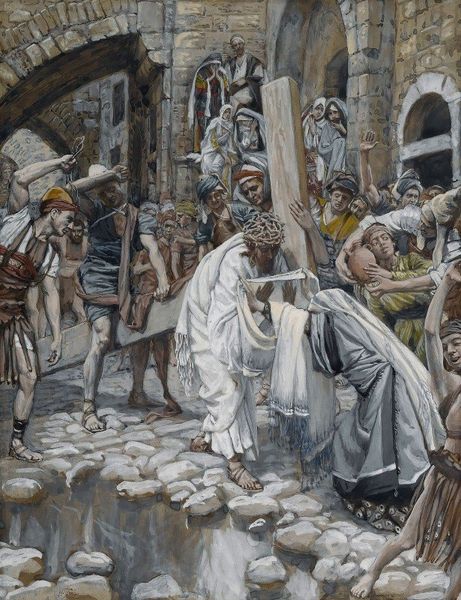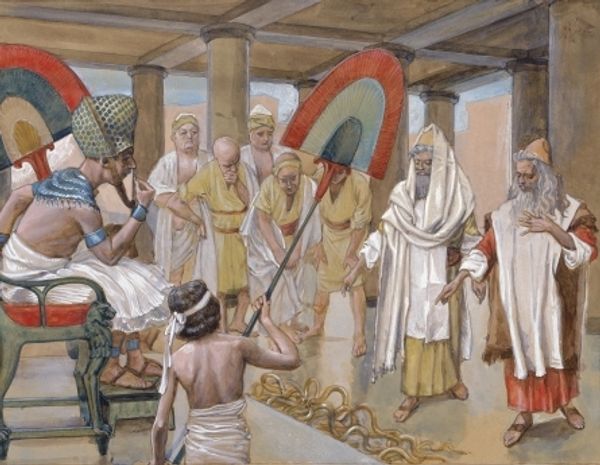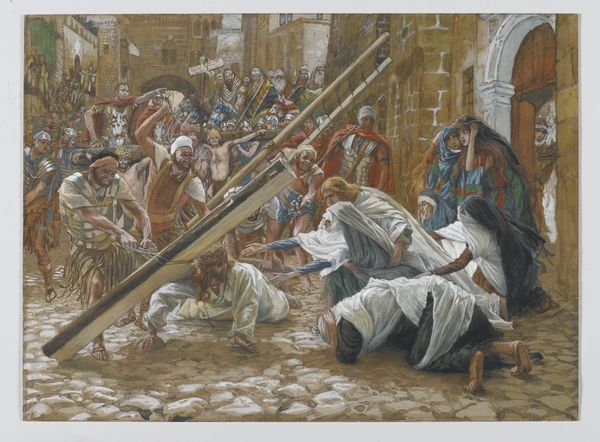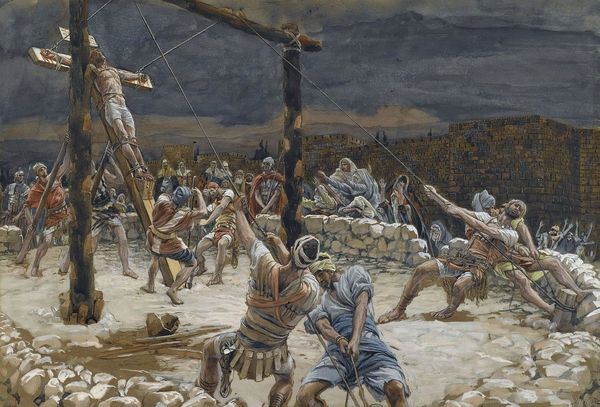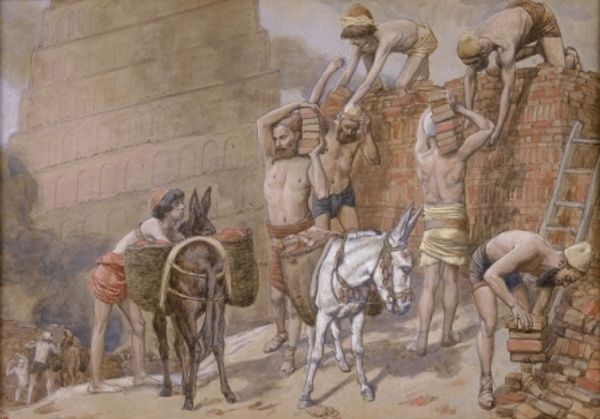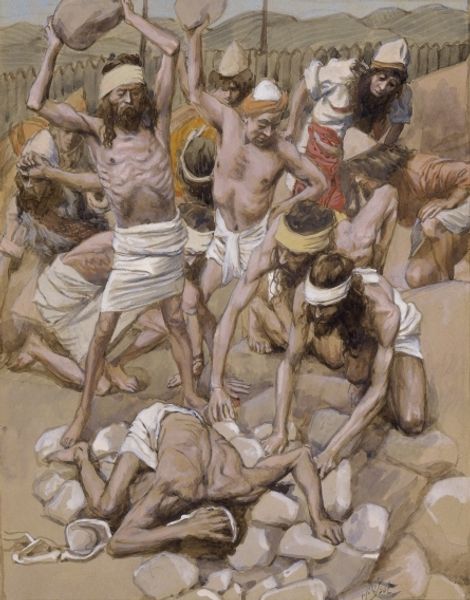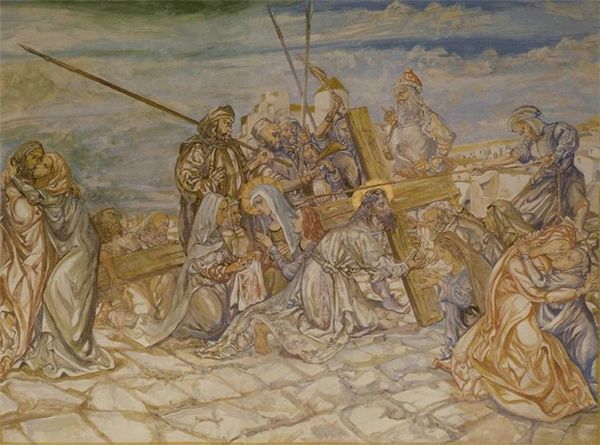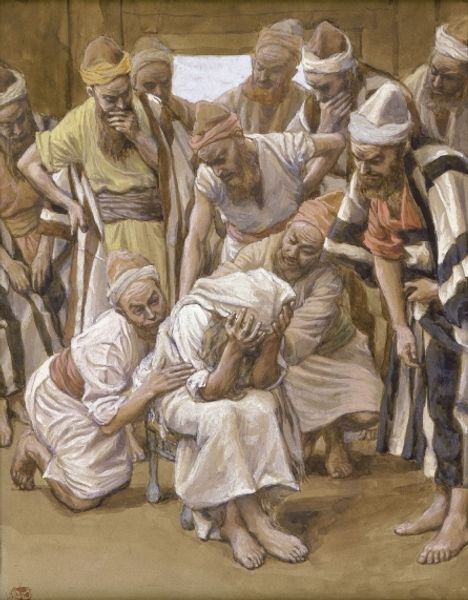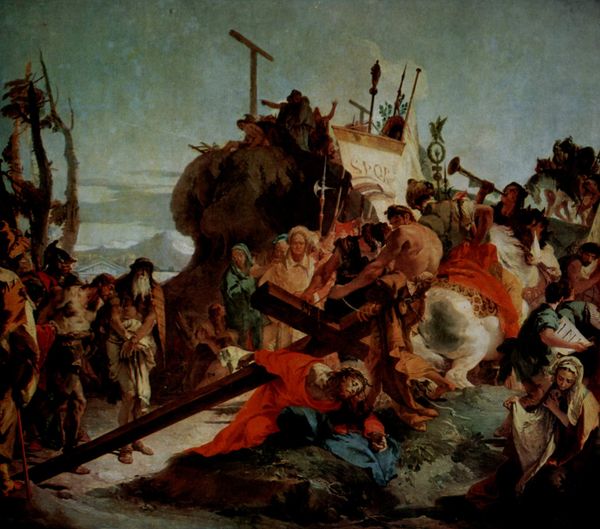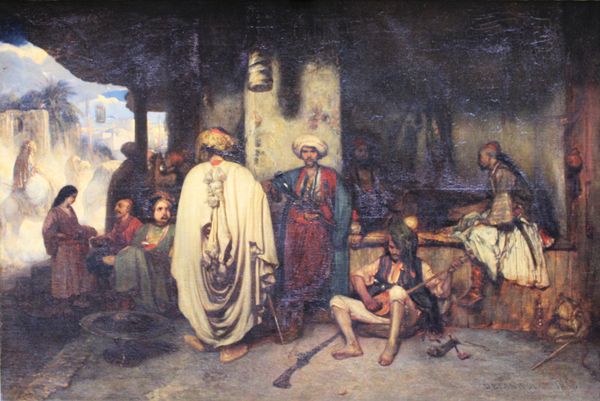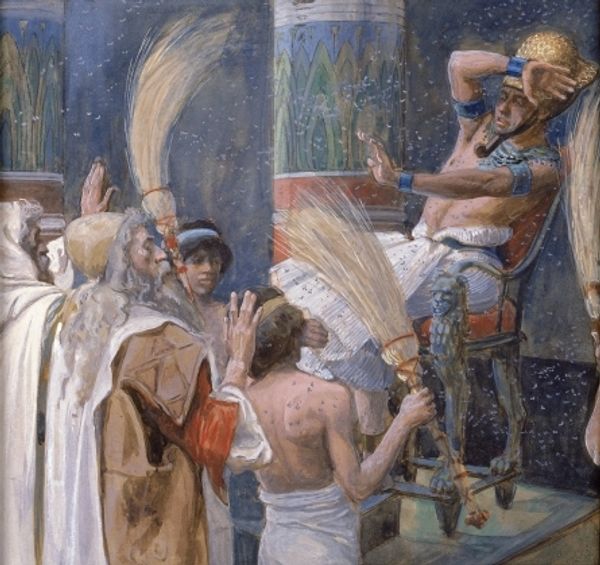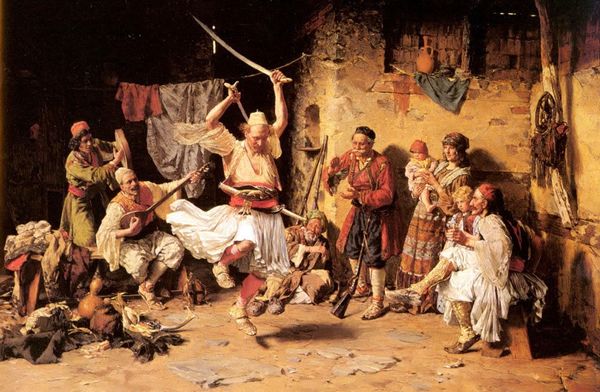
painting, watercolor
#
narrative-art
#
painting
#
oil painting
#
watercolor
#
history-painting
#
academic-art
#
portrait art
#
watercolor
#
realism
Copyright: Public Domain: Artvee
Editor: Here we have James Tissot's "The First Nail," a watercolor and oil painting created between 1886 and 1894. It's a rather stark and unsettling image depicting the crucifixion. There’s a rawness in the application of paint, adding to the visceral impact of the scene. What do you make of this particular depiction? Curator: Well, beyond the immediate religious context, it's a pretty gut-wrenching commentary on human nature, isn't it? Tissot invites us to not just witness, but *feel* the act. Look at how he places us right in the dirt with the rough wood and the almost nonchalant way the soldiers go about their grim task. There's this strange tension between the clinical, almost detached realism, and the profoundly spiritual weight of the subject matter. Do you see it? Editor: I do. It feels like he's focusing on the physicality of the event, but the expressions of the crowd in the background…they're conveying a completely different story. Is he playing with our sense of empathy here? Curator: Precisely! He’s dangling it, almost teasing us with the banality of evil versus the enormity of sacrifice. Makes you wonder, doesn’t it? If we were there, where would we stand – hammering the nails, weeping in the crowd, or just passively watching? This piece sticks with you precisely *because* it offers no easy answers. I wonder if that was his intent? Editor: It certainly achieves that effect. I came expecting reverence, and instead I’m confronted with discomfort and a challenge. Thank you! Curator: My pleasure! Art that shakes us out of complacency is, perhaps, the most vital of all.
Comments
No comments
Be the first to comment and join the conversation on the ultimate creative platform.
